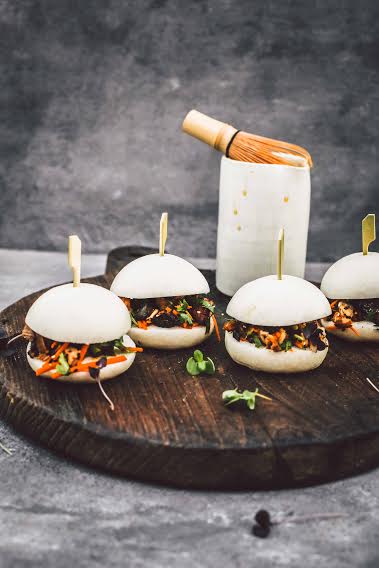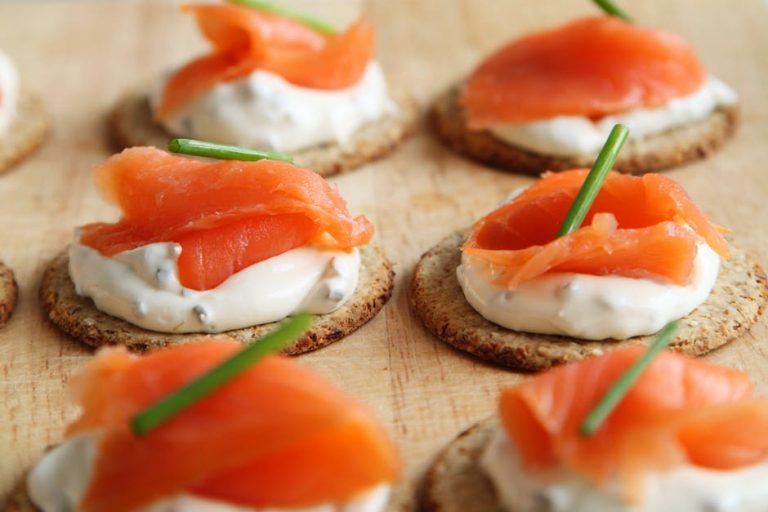We asked some of Australia’s best executive event chefs for tips on designing the perfect large-scale function menu, that’ll keep (the hundreds of) customers happy.
John Savage, executive chef for Sofitel Melbourne on Collins, Woolshed head chef Brad Gifford, and Showtime Events executive chef, Vasantha Caldera share their insights.
Feeding the masses can be a daunting task. Where do you start when designing the function menu? Unfortunately, loaves and fish just don’t cut it anymore. Unless by loaves you mean mini brioche sliders, and by fishes you mean crumbed rockling fillets with a fennel slaw.
You need the function menu to sound attractive and the food to look attractive so the guests get excited by what's written on the menu. - John Savage
A function menu communicates your event's/restaurant's brand in a manner that builds a sense of excitement among diners whenever they are there. A well-crafted menu, with balanced dishes and cleverly chosen ingredients, will guarantee a memorable culinary experience. There are many function menu templates online, however, creating your own function menus can be both challenging and enjoyable. Learn about menu psychology and design your perfect function menu below:
Know your audience
Before designing an event menu, make sure that you determine the guests' profiles and preferences. You need to know who you’re feeding: an entire function menu changes based on the makeup of the group. “I ask the client what they are hoping to achieve with the event and who are the stakeholders,” says Woolshed's Head Chef Brad Gifford. “This includes the age and female/male ratio if they are staff or clients. That really helps me design the function menu to the style of the event and the audience. Working hand in hand with a client to achieve their vision gives me an adrenaline rush.”
The budget, understandably, can also really shape the function menu. “You need to try to marry together what the guest is wanting and expecting, along with items that you know you can produce that also falls within their budget.” It’s a fine balancing act of delivering on high expectations, whilst sticking to strict margins.
Once I understand the vision, then some budget parameters are agreed on, I can then turn my attention to create a function menu that meets and exceeds the objectives and expectations of the client. - Brad Gifford
Keep it simple
The best restaurants around the world know that less is more. Look at the restaurant's menu for Michelin-starred establishments, and it’s usually a list of three or four key ingredients. As Sofitel Melbourne on Collins executive chef John Savage puts it, “Try to the make dishes simple, but full of flavour.” Brad says this principle extends across all culinary domains. “Keep it simple. Do fewer things well. Remember - the best, freshest and in-season ingredients are the key.”
Simple doesn’t mean boring. Keep the classic, favourite crowd-pleasers – Brad says arancini and sticky date pudding are a standout at events – but chuck in a few tricks too. As Brad says, “Clients are much more food savvy now. Thanks to the rise of food and cooking shows on TV, clients are familiar with techniques and ingredients.”
Remember also to include menu descriptions. Use menu item descriptions to communicate the taste of a dish. Words like “savory,” “buttery,” and “crisp” elicit a visceral reaction of hunger.
So, you want to strike a balance between keeping customers sated and offering a few menu items that they’ll ‘gram, tweet and talk about the next day.

Food stations are a great way to demonstrate this concept. Each station tends to celebrate one cuisine, and they’re super trendy in events right now. “Sushi is very popular, along with Asian-style hot food stations,” says John.
Showtime Events chef Vasantha Caldera agrees. “At the moment we’re seeing a real increase in authentic food stations: Italian food stations, Spanish, Mexican, sliders. Customers just really love that interactive experience and seeing their food being plated up in front of them.” Brad taps into one of the biggest perks of the food station: the self-service. “Clients love the casual style of grazing and plentiful food when they want it. Our most popular ones at Woolshed are the 'Build your Own Burger' Station and the Souvlaki Station.”
Menu engineers suggest that each menu category should have no more than seven items: seven appetizers, seven mains, seven desserts, seven cocktails, etc. So when designing menus, keep the number of items in each category to a maximum of seven.
By integrating these best practices, you can create the perfect function menu that’ll have guests raving about it long after the big night is over.
Menu design
Whether you're a caterer, event planner, or graphic designer, an outstanding event menu design is one of the things that people will remember from a special event. When it comes to menu design, you want your guests to be able to visualise the food before they even taste it. This is especially important for vegan and vegetarian options.
However, don't turn your menu into a full-blown restaurant menu. You are not restaurant owners. Take the time to think about what you can do, and then pare it back. The key is making sure to have a good mix of items on the menu, as some people don’t like certain things. You also want to find the food to look attractive so the guests get excited by what's written.
Tip: Leave some negative space to improve aesthetics and ensure the guest isn't overwhelmed.
Keep in mind the seasonality of ingredients when you’re designing a menu - this will make the dishes more interesting and it can also help keep costs down. For example, if there is an abundance of tomatoes at your local market, use them up early in the season rather than trying to get something out of season or imported from another place.
The fundamental goal of menu engineering is to create a mix of items that will drive the most revenues and profits, the perfect menu.
Size does matter
When you’re creating handheld morsels that need to be downed in a couple of bites, think about what you would want to eat. And similarly, what you would find annoying to eat, standing up. Super-packed sliders that are a bit too slidey are annoying. Canapés that are piled to the sky are a pain. The same goes for canapés that have a large and inedible leftover part. Whole roasted baby corn is cute, but you don’t want people standing around holding husks wondering "Where do I put this?" while balancing a drink and a phone.

Complements get compliments
A principle of good food is the idea of balance and complementary flavours. “You need to ask yourself, ‘Does each course complement each other? Does it balance out, in respect of light and heavy food, depending on seasons and weather?’” says John.
This concept of balance also extends to the bar. Think about what kind of drinks you have on offer. You want to serve drinks that complement the food. If your focus is on hearty items like small bowls of risotto or lamb cutlets, opt for full-bodied reds. If seafood or pasta is on the menu, have a nice variety of whites available. Anything cheese-related is a good all-rounder. People love cheese, and it goes well with both red and white. For pan-Asian style food, sliders or tacos, crisp and hoppy beer is your best bet.
Dietary dilemmas
One of the biggest challenges that modern chefs face is dodging the ever-expanding landmines that are dietary requirements. Another important factor when designing a function menu is to remember dietary preferences and allergies your guests may have. “There are now so many, and they’re so varied, what with allergies and guests’ preferences all rolled into one. Some events may have 30% of guests on three or four different menus, which is challenging.”
John’s tip? “Try to make many dishes gluten-free. This is the most common allergy. So, if you create the dishes for all guests in mind, it makes it a safe option for a client to choose for large functions.”
Make sure your staff know their stuff too. Draw up a table with the major allergies and dietary requirements listed, along with each food item, and colour code to signal allergens. This way your staff have a straightforward guide they can refer to if a customer asks, “Is this gluten-free and lactose-free?”
Make your menu visible
Whether you're posting a digital menu online, creating menu boards or designing a printed menu, make sure you’re highlighting specific items. For example, if your burger of the month is something special, highlight it or add ‘chef's choice’ to the title to create intrigue. In print menus, use colour and illustrations for interest. If wording matters - like when you're naming dishes - be creative and use puns or an interesting description that speaks to the dish.
By making sure your menu items are visible, you're going to make it easier for people to order, resulting in happier customers - and hopefully more sales.
The end game
Once an event is over, you want to have minimal waste left over, and what waste you do have, you want it to be easy to clean up. Chocolate fountains are fun...but they’re also a pain to pack down. This isn’t Willy Wonka's chocolate factory and you don’t have a room of tiny, cheery orange men at your disposal. Satay is delicious, but you’re going to be left with about a thousand bamboo sticks that tipsy guests will manage to hide in the strangest of places.
Think about: what stacks well in a dishwasher, what’s easy to pile and carry for staff, and what’s environmentally responsible. Vasantha suggests planning in reverse for the really big functions. “I often start at the end, like, the garbage end, and work my way backwards. It’s a big production! The day of the event and the clean-up should be the easiest part. That’s what you’re aiming for.”
Every part of the event planning process is important! Check out our guide to creating the perfect function pack >>
Looking for an event venue to hire?
VenueNow has you covered with over 2,000 venues across Australia ranging from large event spaces to small meeting rooms. Find your perfect venue for hire faster than anywhere else.
Customers
Want to get in contact?
Call our support team on 1300 647 488 during business hours AEST.
© Copyright VenueNow 2025 | SPARE GROUP PTY LTD | ABN 22 607 830 302
